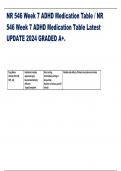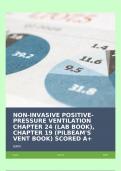Exam (elaborations)
Test Bank for Abnormal Psychology, 18th Edition by Jill M. Hooley| Test Bank With 100% Verified Answers
Download Test Bank Immediately After the Purchase. Just in case you have trouble downloading, kindly message me, and I will send it to you via Google Doc or email. Thank you Test Bank for Abnormal Psychology 18e 18th Edition by Jill M. Hooley; Matthew K. Nock; James N. Butcher. ISBN-13: 9173 ISB...
[Show more]













